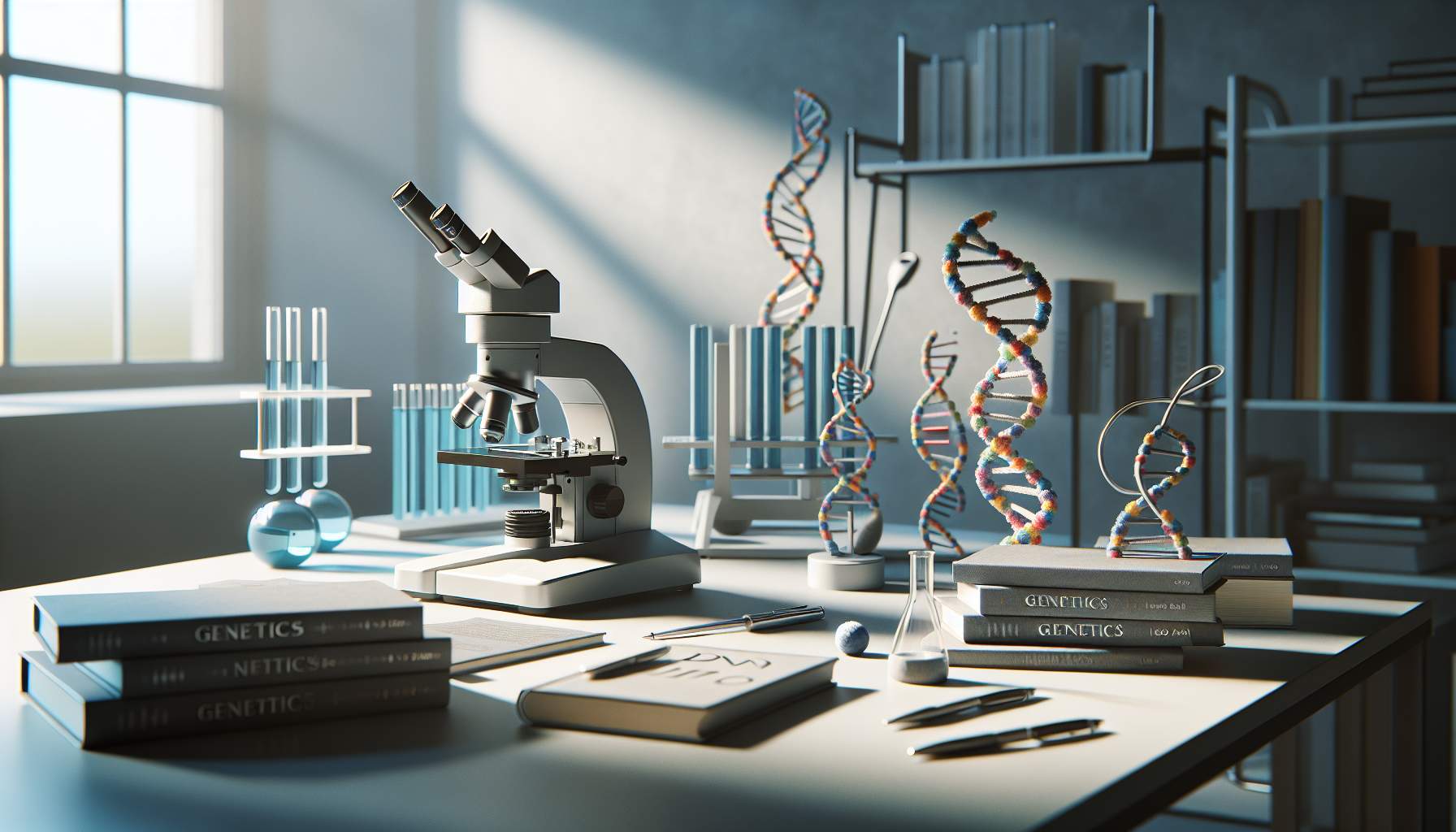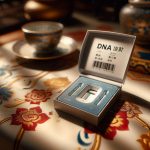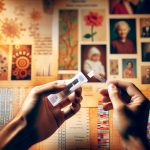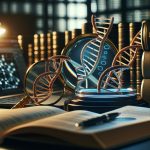In a recent discussion, Castedo Ellerman, the visionary behind Gene Heritage, sheds light on the complex world of genetics. The realm of DNA and genes is often clouded with myths, half-truths, and outright falsehoods. It’s high time we separate fact from fiction.
Ellerman points out a crucial misunderstanding many hold: believing that our genes have the final say in our lives’ paths. This common misconception leads people to seek absolute answers from genetic testing, expecting their entire future to be laid out based on their DNA.
However, Ellerman emphasizes that this is not how genetics works. Our destiny isn’t something that can be read off like lines from a book; instead, it’s influenced by a myriad of factors where genes play just one part. He cautions against putting too much faith in deterministic views of genetics—thinking that DNA can predict everything about us simplifies the rich complexity of life itself.
This conversation serves as a reminder to approach genetic information with curiosity but also with skepticism towards oversimplified answers. In understanding our genetic makeup, we should recognize it as one piece of the broader puzzle that shapes who we are.
Begin by introducing yourself and your profession
I don’t have a traditional background in genetics; my career path has taken me from software development to Wall Street. However, the thread connecting all my experiences has been a deep fascination with mathematics. This interest unexpectedly led me into the world of genetics back in 2015 when I began exploring DNA data within my own family. It was intriguing to see how mathematical principles could be applied to decipher genetic information.
The journey started as a personal project—analyzing the DNA of relatives ranging from my parents and children to my brother and his family. The objective was straightforward yet captivating: uncovering how much DNA we shared with our grandparents and identifying common genetic traits, such as lactose intolerance or blue eyes, across generations.
This hobby quickly evolved into something larger than I anticipated. After sharing the tools I developed for this analysis openly, I took it up a notch by co-founding Gene Heritage, alongside a colleague who specializes in motion graphics design. This venture marked the beginning of an unexpected but rewarding chapter in blending mathematics with genetics, proving that sometimes, the most fulfilling paths are those we stumble upon rather than plan.
What sets your service apart?
Gene Heritage stands out for its unique approach to explaining the impact of genetics on various traits. It dives into how certain genes can significantly influence characteristics that are easily noticeable, while others have a minor effect. This distinction sheds light on the complexity and nuance of genetic inheritance, challenging common misconceptions.
Many users of Gene Heritage reports, including family members who’ve explored their genetic makeup through these insights, have discovered that popular beliefs about genetics don’t always match reality. A prime example is the so-called « athletic gene, » which received considerable attention in the media a few years back but actually plays a minimal role in athletic prowess. In contrast, genes determining eye color have a much more substantial and observable impact.
One challenge faced during the development of these reports was conveying the varying degrees to which genes can predict traits. Initial expectations often lean towards an oversimplified view where specific genes directly lead to particular outcomes—like assuming possession of a certain gene automatically bestows one with superior taste sensitivity.
To address this challenge, Gene Heritage introduced a scoring system categorizing traits based on their predictability from DNA data: high, moderate, or low. For instance, genetic markers related to athleticism fall under the ‘low’ predictability category, whereas those affecting eye color are considered ‘highly’ predictable.
This nuanced grading system enhances understanding by illustrating that not all genetic influences are created equal—some are clearly observable and significant while others play only a minor role. Through this approach, Gene Heritage‘s reports navigate complex genetic landscapes in an accessible manner allowing individuals to appreciate the true extent and limitations of their genetic inheritance.
How do you use the information you gather?
In essence, the approach taken towards generating reports is not akin to what you might find with services like 23AndMe. These types of companies often share findings based on a vast array of customer data, highlighting common traits and statistics. However, this method diverges significantly from that path. Here, the foundation of all analysis and conclusions drawn lies within scholarly research papers meticulously reviewed and understood.
The aim is to distill the essence of these academic findings directly related to an individual’s raw DNA information uploaded by them. By doing so, it ensures that insights provided are deeply rooted in scientific research rather than broad statistical analyses derived from a diverse pool of consumer data. This approach underscores a commitment to delivering personalized reports grounded in validated scientific studies, ensuring both accuracy and relevance to each unique DNA profile examined.
Who usually seeks your services?

Discovering the genetic blueprint inherited from our ancestors has always piqued human curiosity, and Gene Heritage steps in to satisfy this intrigue. At its core, the service reveals a mathematical breakdown of DNA shared between generations, making it possible to see just how much of our genetic makeup comes from each grandparent. This analytical approach throws up some unexpected results for families—such as one sibling inheriting a noticeably different share of genes from their grandparents compared to another.
Most customers flock to Gene Heritage driven by a blend of curiosity and the desire for deeper familial understanding. While many opt for individual reports out of sheer fascination about their personal genetics, others dive into the grandparent analysis with data spanning three generations. Herein lies an interesting revelation: while anticipation might lean towards uncovering ancestral roots akin to services like ancestry.com or 23andMe, Gene Heritage offers something slightly different yet profoundly insightful.
Contrary to expectations of detailed ancestry information, what emerges predominantly are insights into specific genes shared across continents and epochs—tracing back over 10,000 years. These findings spotlight ancient mutations that underscore our connection to distant times and places but may differ from what some initially seek.
Beyond these revelations, Gene Heritage shines as an educational platform rather than a guide for lifestyle choices like diet optimization. It opens up a world where science meets heritage—where learning about genetic traits becomes both fascinating and informative. Particularly captivating is the examination of taste receptor genes which constitute nearly half of all genes analyzed by Gene Heritage. The link between these genes and our tastebuds exemplifies one of the more direct relationships between genetics and personal traits—an area ripe with intrigue for many exploring their genetic landscape.
In essence, delving into one’s DNA through Gene Heritage extends beyond mere ancestral discovery; it’s an enriching journey towards understanding the scientific nuances behind our genealogy that connects us in unexpected ways not only to our immediate family but also to remote ancestors whose legacy we carry within us today.
What are your upcoming goals for Gene Heritage?
Throughout 2019, there has been a halt in the production of new Gene Heritage reports. The latest versions available to users are those crafted towards the end of 2018. Over this period, I’ve embarked on an educational journey with the support of both a professor and a postdoctoral researcher. This academic adventure involved diving into various study materials, including textbooks and scholarly articles, all under the guidance of experts in genetics based out of Boston.
An important insight I’ve gained during my studies is the significance of understanding the global population from which DNA samples are collected. This knowledge is crucial for accurately linking specific DNA data to particular traits that interest us. The idea of leveraging ethnicity-based predictions to deduce potential traits has sparked enthusiasm in me—a concept I eagerly plan to integrate into future Gene Heritage reports.
This exploration not only broadened my understanding but also highlighted how vital it is to consider genetic diversity’s depth when making correlations between DNA and human characteristics. As we move forward, these learnings promise to enhance our reports’ accuracy and provide more meaningful insights into our genetic heritage.
What trends do you think will become more common in the industry soon?
In recent times, the landscape of services built around understanding our genetic makeup has dramatically evolved. Initially, the industry focused primarily on direct-to-consumer offerings, with a singular approach to providing insights into one’s DNA. However, as the field has matured, we’ve witnessed a notable bifurcation in these services.
On one end of the spectrum are scientifically rigorous reports that delve deep into clinical and evidence-based findings. These studies aim to present facts that have a solid foundation in science, offering users insights that are not only relevant but also verified by empirical research. A prime example of this evolution is seen within companies like 23andMe, which operates at an interesting intersection of consumer-friendly DNA testing and clinically valuable insights.
Conversely, there’s been a rise in services reminiscent of traditional genealogical pursuits predominantly led by Ancestry.com. This platform continues to draw interest from those curious about their lineage and how it intertwines with broader historical narratives. As advancements in DNA technology persist, such platforms remain pivotal for individuals eager to explore their heritage.
Yet, alongside these developments lurks a trend towards what could be likened to ‘genetic horoscopes.’ In this realm, claims about one’s future or personality based on their genetics tend to lean more towards speculation than scientific evidence. Much like reading your horoscope in the morning paper, these interpretations are vague enough to resonate with a broad audience despite lacking concrete ties to an individual’s genetic material.
This sector’s diversification underscores both its growth potential and the necessity for discernment among consumers. While some offerings provide invaluable insights grounded in rigorous science or enriching explorations into one’s ancestry, others venture into less reliable territories akin to entertainment rather than education or health guidance.
How to distinguish between scientific facts and « genetic predictions »?
In the realm of scientific research, one key factor that often confuses laypeople is the presence (or absence) of concrete numbers like odds ratios or variance percentages. These figures are pivotal because they illustrate the magnitude of a study’s findings or the level of uncertainty surrounding them. However, for most folks, these statistics might as well be written in an alien script. They’re challenging to grasp and rarely make it into more accessible forms of communication, such as consumer reports.
Taking a step towards simplification, Gene Heritage has endeavored to break down complex genetic data into three easily understandable categories: barely predictable, fairly predictable, and highly predictable. This approach aims to demystify how well certain traits or predispositions can be forecasted based on one’s DNA data. It’s a straightforward method that avoids overwhelming users with jargon and instead focuses on practical insights.
When venturing into genetic testing or any other consumer-driven science service for that matter, skepticism serves as a healthy companion. The market is saturated with products—from questionable fitness equipment to dubious nutritive supplements—all promising miraculous results without solid scientific backing. In such an unregulated space, discerning between genuine science-based offerings and those merely capitalizing on buzzwords becomes essential.
The allure of DNA tests lies partly in our fascination with genetics—a field that has seen enormous strides throughout the 20th century and fundamentally altered our understanding of diseases and personal traits. Yet this fascination also leads to overestimations about what DNA testing can reveal about us now or determine about our future.
It’s crucial for consumers to remember that not everything labeled « DNA » holds the key to profound personal insights or predictions about their fate. As science advances, it becomes increasingly clear that while genetics play a role in shaping who we are, they do not encapsulate our entire being nor dictate every aspect of our health and personality.
How simple is it for individuals to grasp your generated reports?
Understanding our genetic makeup isn’t as straightforward as one might hope. The language used in genetic reports often feels like it’s shrouded in mystery, with terms and numbers that boggle the mind. Gene Heritage, however, strives to cut through the fog by simplifying these concepts into something easier to digest. Instead of overwhelming readers with odds ratios or statistics on heritability, it categorizes information using terms like highly, fairly, and barely predictable.
One common misconception is the idea that a single gene dictates each of our traits. In reality, we inherit two versions of every gene, alleles, one from each parent. And while this can get complicated (thanks to mitochondria and the Y chromosome), Gene Heritage aims to visually demystify this aspect for us all. They’ve gone out of their way to present pairs of alleles in color-coded formats, though they’re mindful not everyone’s keen on digging deep into genetics vocabulary.
At its core, if you’re looking at a Gene Heritage report hoping for an easy answer about your future health or abilities, akin to reading horoscopes or seeking direct clinical advice, you might be missing the point. This isn’t about predicting specific diseases or telling you whether you’ll excel in sports based on your genes alone.
Sure, finding out if you have a gene linked to lactose intolerance could nudge your dietary choices slightly. But above all else, Gene Heritage serves up knowledge as its main course – offering insights into how genes play a role in shaping who we are but emphasizing that they don’t dictate everything about us.
For instance, let’s say someone hinted that because you lack an « athletic gene, » sports shouldn’t be your thing. Reading through a Gene Heritage report could give you perspective; showing how minimal such genetic factors actually influence athletic ability might encourage you not only to stay active but also appreciate the nuances of genetic impact.
In essence, diving into these reports equips us with more than just facts about our biology; it helps challenge myths and assumptions about genetics’ role in our lives – providing practical understanding rather than explicit directions for living better or healthier lives.


















